Kitchen Yarns Read online
Page 9
Two years ago I found myself in a new home, just my daughter Annabelle and me. But I made a room for Sam, with purple walls and books of plays and a table with a jigsaw puzzle always in the works. He stands beside me in this new kitchen, all six feet, five inches of him, stirring polenta with a long wooden spoon. “It smells like home here,” he tells me when I add onion to sizzling oil, then carefully brown the meat I’m going to braise. I press my arm against his, and suddenly he is a baby in a car seat, and I am carrying him across Hope Street, I am telling him, We are almost there, buddy, I am pretending I am an airplane delivering garlicky hummus to his open gummy smile, I am finding my way, I am finding our way. We are home.
My Favorite Soft Foods
Two and a half decades have passed since I was a single mother trying to figure out what to feed her baby after the doctor said he was ready for soft food. Today, a better cook and a calmer mother, I would have no problem determining what soft food to make. Below are my favorite soft-food recipes, for babies and grown-ups alike.
FRENCH SCRAMBLED EGGS
My father made the most delicious scrambled eggs by adding cream and sugar to them when he was whipping the eggs together, before pouring them into the pan. But I think the scrambled eggs I make in a double boiler—often referred to as French Scrambled Eggs—are even more delicate and better-tasting. Made with cream and butter, these small, soft curds are my favorite soft food these days. Escoffier came up with the idea of cooking the eggs in a double boiler, which prevents them from browning and, therefore, results in a creamier egg. My husband can get the same results in a regular old frying pan. But for the rest of us, this method won’t disappoint or challenge.
Makes 2 servings
INGREDIENTS
1 tablespoon butter
3 eggs
Salt and pepper
3 tablespoons heavy cream (if you don’t have heavy cream on hand, half-and-half or whole milk works fine)
Chopped chives (optional)
Set up your double boiler by putting enough water in the bottom pan to just caress the top pan.
Get the water simmering and put the top pan on it.
Add the butter and let it melt.
Lightly beat the eggs in a small bowl with salt and pepper (white pepper is nice in these because it keeps the eggs daffodil yellow, without adding black specks)
Add the eggs to the melted butter.
You need to whisk the eggs as they cook, but the longer you wait, the larger the curds will be. If you whisk right away, you get smaller curds. This is entirely up to you.
When the eggs begin to set, whisk in the milk and the chives, if you have them.
That’s it! French Scrambled Eggs! Delicious served with thick-cut bacon on the side and good toast.
NEVER-FAIL SOUFFLÉ
From Saveur magazine
The first thing you need to know about this soufflé is that it’s not a soufflé. Maybe it’s a strata. I’m not really sure, though once I was invited to a brunch where everyone had to bring a dish, so of course I brought this, because it’s pretty, yummy, and people always praise it highly and ask me for the recipe. But the hostess made a strata, a complicated soufflé dish with sausages and peppers and lots of eggs. When my soufflé sat beside that strata, the hostess actually took her dish off the table. However, when you give people this recipe, they make a disgusted face. How could something this good have such mundane ingredients in it? All I can say is make it exactly like Matt Taylor-Gross instructed in Saveur a decade ago, and you, too, will wow a crowd. I make it every year for my mother’s Easter breakfast and anytime friends stay over on a Saturday night, so that on Sunday morning we have an elegant meal of soft, cheesy eggs. It’s very important that you set this up the night before you are going to bake it, and that you serve it hot. On Easter, I let it sit overnight in the fridge and then bake it at Gogo’s house; that way, it’s puffy and hot when it’s served.
Serves 8
INGREDIENTS
A dozen eggs
2 cups half-and-half
Pinch of red pepper flakes (I leave this out because I’m often serving it to kids who can taste something spicy a mile away)
3 cups grated cheddar cheese
1 loaf white bread, crusts removed, bread cut into 1-inch cubes (I have tried this with all kinds of bread, and the cheap stuff—like Wonder bread—works best)
Salt and white pepper
6 tablespoons butter, melted
The night before you are going to serve this, beat the eggs, half-and-half, and crushed red pepper flakes, if you’re using them, in a bowl. Set aside.
Sprinkle 1 cup of the cheese on the bottom of a 9-by-12-inch baking dish.
Cover the cheese with about two-thirds of the bread and season with salt and pepper.
Sprinkle another cup of cheese on top.
Cover this layer with the rest of the bread and salt and pepper.
Finish with the final cup of cheese.
Pour the egg mixture over the cheese and bread.
Drizzle the melted butter on top.
Refrigerate overnight.
About an hour before serving, take the dish out of the fridge and let it come to room temperature.
Preheat the oven to 350 degrees F.
Bake until puffed and golden, about 45 minutes.
Guacamole
If you have a baby ready for soft food, I highly recommend introducing him or her to guacamole, which is also one of my own favorite things to eat. Hold the tortilla chips until the kid is older. My husband has a simple recipe that even my fourteen-year-old daughter, Annabelle, makes on her own: Chop a shallot and let it sit in lots of lime juice for ten or fifteen minutes, mash up three or four avocados and add the shallots with most of the lime juice and some salt. Easy and soft! If you want a more complex guacamole, below is the recipe my friend Bruce Tillinghast makes, which appeared in Christopher Kimball’s Milk Street. After I saw a friend of mine, the fabulous writer Laura Lippman, make and serve guacamole in a heavy stone mortar and pestle, I went out and got one myself. I suggest you invest in same, but until then mash with whatever you have on hand.
CENTRAL MEXICAN GUACAMOLE
Courtesy of Christopher Kimball’s Milk Street
Too many guacamole recipes are a muddle of flavors. Diana Kennedy’s use of just a handful of traditional ingredients allowed the dish’s simple flavors to be the focus. White onion mashed with cilantro and serrano chiles adds the right amount of bite, while chopped grape tomatoes offer balanced acidity against the rich avocados. Mashing the cilantro, chiles, and onion in the same bowl as the avocados keeps their flavors in the food, not on the cutting board. We were surprised that we never missed the lime juice. Guacamole hinges on the ripeness of the avocados; they should be soft but slightly firm.
Don’t discard the seeds from the chiles. This recipe relies on them for a pleasant heat.—J. M. Hirsch and Diane Unger
Serves 4
INGREDIENTS
4 tablespoons finely chopped fresh cilantro
1 to 2 serrano chiles, stemmed and finely chopped
2 tablespoons finely chopped white onion
Kosher salt
3 ripe avocados, halved and pitted
1 pint (10 ounces) grape tomatoes, finely chopped
Tortilla chips, to serve
In a bowl, combine 2 tablespoons of the cilantro, the chiles, the onion, and ½ teaspoon salt. Mash with the bottom of a dry measuring cup until a rough paste forms, about 1 minute. Scoop the avocado flesh into the bowl and coarsely mash with a potato masher or fork. Stir in half of the tomatoes until combined. Taste and season with salt. Transfer to a serving bowl and sprinkle with the remaining cilantro and tomatoes.
One Potato, Two
The potatoes of my childhood came two ways: mashed and baked. The mashed were buttery and smooth and always served with roast beef or pork roast, drenched in gravy. These were my brother Skip’s favorite food, and after everyone else took some, he was allowed to eat t
hem straight from the big red bowl in which they were served. All of them. This is partly why he had to buy his clothes in the husky department.
The baked potatoes were wrapped in foil, baked to death, and left to wither in the oven. Usually we had them when we had steak for dinner. We unwrapped the foil, made a slit in the potato, and dropped in a pat of margarine and then a dollop of sour cream. For this reason, I am not a fan of baked potatoes.
Until I had children, in my late thirties, I pretty much avoided potatoes (except for French fries, which are an entirely different thing). Sometimes because of the calories, sometimes because of the overbaked ones of my youth, sometimes because wild rice just tasted better. But then along came kids and the need to cook balanced meals. Protein. Starch. Vegetable. Every single day.
It was easy to return to mashed potatoes: throw some cooked potatoes in the KitchenAid (or hand mixer) with a lot of butter and a splash of milk and a good dose of salt. But even children shouldn’t eat mashed potatoes every night.
Despite this challenge, let me say here that cooking dinner for my family was my favorite part of the day. Sam and Grace would stand on their little stools and line the pie plate with sliced apples for Apple Crisp or stir the tomato sauce on the stove while I chopped and diced and boiled and sautéed. We made a happy little kitchen, the three of us, the air filled with the warm smells of roasting chicken or fresh rosemary or sweet corn cooling. We set a pretty table every night, too, each of us with our favorite color Fiesta ware plate and cotton napkins we’d bought at a market in Provence. In fact, when I asked Sam—now twenty-five—what his favorite dish of mine was, he couldn’t answer. Instead, as I began to sauté onions and garlic for chili, he said, “That’s what I love! Coming into the kitchen and smelling that and seeing you standing at the stove.”
But back to potatoes.
Some twenty years ago, I put a chicken in the oven to roast (also so easy: shove a lemon or an apple with a head of garlic cut in half longways inside it, rub softened butter all over the skin, stick branches of fresh rosemary or tarragon or thyme or all three in the cavity and the leg joints, douse with salt and pepper, and bake at 375 degrees F until the little red thermometer pops up) and stared at the Yukon Gold potatoes on the counter.
As if reading my mind, Sam said, “Let me make them!”
Really, even though he was only four or five, I was more than willing to hand over this part of the dinner to him.
“How will you cook them?” I asked.
“In the oven!” (Sam has been an actor his whole life, so the exclamation marks are exactly how he spoke, even then.)
“I don’t know, Sam, Mommy’s not a fan of baked potatoes,” I told him.
“Cut them up and I’ll do the rest!”
So I did. I peeled the potatoes and cut them into chunks, then handed them over to Sam, who poured more olive oil and salt on them than was reasonable. He stirred them to be sure they were good and coated, tossed in some fresh rosemary sprigs, and announced that they were ready to go into the oven. Every fifteen or twenty minutes he’d peer in and decide they weren’t quite done, until finally they were: crunchy and brown on the outside and soft and white inside, perfectly seasoned. Sam’s Potatoes became a staple at dinner. Sometimes he added whole cloves of garlic. If we didn’t have fresh rosemary, he did without any herbs. And they always came out just right.
Grace’s Cheesy Potatoes, on the other hand, required more precision. To most people, “cheesy potatoes” means potatoes au gratin. But in my children’s childhood home, they were Grace’s Cheesy Potatoes, sliced thin, layered, and topped with shredded Gruyère and cream. The recipe came from a Patricia Wells cookbook that I received as a birthday gift. Grace loved any task that required repetition and fine motor skills, so layering the potatoes in concentric circles and evenly spreading the cheese delighted her. The bubbling, cheesy finished dish delighted all of us.
I no longer make these well-balanced dinners every night, so my need for a delicious potato dish has diminished. Sam grew up and moved away, the way children do. Grace died suddenly when she was only five, leaving Sam and me to make her Cheesy Potatoes, which we did together, all through his childhood. My youngest child, Annabelle, prefers rice to potatoes anytime. Still, on the nights I roast a chicken, I do make Sam’s Potatoes. And on a winter night, Grace’s Cheesy Potatoes served with short ribs or thick stews still delight. Just as baked potatoes bring me back to the noisy dinners of my own childhood—the foil and wrinkled skin and hard white flesh—on the nights when I roast or gratin potatoes I am back to that too-small, warm kitchen of my own young family. My children are standing on stools at the counter. Their little hands are layering and sprinkling and tossing potatoes, and for that first bite, I am as happy in the same way as I was back then.
SAM’S POTATOES
These potatoes are best made by a child under the age of ten. Cut the potatoes for him, peel the garlic, and let him do the rest. Tell him that Sam, the boy who invented this, is now twenty-five years old and is an actor living in Brooklyn, New York. He still makes his potatoes regularly.
Serves 4 to 6
INGREDIENTS
Olive oil, enough to coat the bottom of the baking pan and the potatoes
4 to 6 potatoes, preferably Yukon Gold, cut into about 8 chunks apiece
6 to 8 cloves of garlic, peeled
Fresh rosemary
Kosher salt, a small boy’s handful
Freshly ground pepper
Preheat the oven to 375 degrees F.
Drizzle olive oil in a 9-by-12-inch baking dish.
Roll the potatoes in the oil so that they are coated.
Toss the garlic in.
Sprinkle the rosemary leaves around the potatoes.
Evenly coat with the salt and pepper.
Roll everything around again with your hands.
Bake until browned, about 45 minutes.
GRACE’S CHEESY POTATOES
Adapted from Bistro Cooking, by Patricia Wells
Bistro Cooking is one of those indispensable cookbooks you should have on hand for whenever you get the urge to go to Paris but can’t hop on a plane. My copy is well loved, all stained and dog-eared, mostly because of these potatoes; this recipe is a hybrid of a few au gratin recipes from the book. They taste best when a five-year-old child makes them.
Serves 4 to 6
INGREDIENTS
2 pounds potatoes, peeled and cut as thin as possible (if you have a mandolin and, unlike me, aren’t terrified to use it, this is the time to pull it out of the cupboard; otherwise, just do your best with a good paring knife)
1 garlic clove, peeled and halved
1 cup heavy cream
1 cup grated Gruyère cheese (I often splurge on good Gruyère for these potatoes because I like them nice and tangy, but the regular stuff works just as well)
Kosher salt
Preheat the oven to 350 degrees F.
Cover the potatoes in water in a saucepan and simmer for about 10 minutes, or until they can easily be pierced with a fork but don’t fall apart.
Drain.
Take the two halves of the garlic clove and vigorously rub the gratin dish (or shallow pan) with the cut side. (This might sound like a step you can skip, but please don’t.)
Layer half the potatoes in the pan.
Add half the cream.
Sprinkle with half the cheese.
Sprinkle with salt.
Repeat: layer half the potatoes on top, and add the rest of the cream and cheese.
Sprinkle with salt.
Bake uncovered until golden brown and bubbling, about one hour.
Allure
There was a magical period of time when I thought I was happy and living the exact life I should be living. I know that many people feel this way all the time, or at least most of the time. But I had opted for adventures and impulsive decisions for most of my life, and although that meant very high highs, it also meant a fair amount of crashing and burning. No regrets,
but I did often feel like I was out of step with other people my age. They were getting married when I was establishing a writing career, having babies when I was getting divorced, sending kids to college when I was having babies.
And then, of course, there were all the losses that kept piling up around me with resounding thuds. My brother, Skip, at thirty from an accident at home. My father at sixty-seven from lung cancer. My five-year-old daughter Grace, suddenly, from a virulent form of strep throat. I always believed in food as the greatest comfort. As Emily Post wrote in her book on etiquette, all you can offer the grieving is a good warm broth. Food can’t heal, but it can soothe and comfort us. Sometimes I felt I spent so much time reeling from grief that I couldn’t find my balance at all. “Things fall apart,” Yeats wrote; “the centre cannot hold.”
But there was a brief time when I felt solid, rooted, happy, right.
I lived in a neighborhood in Providence called Fox Point, full of dogwood trees that bloomed pink and white in the spring, and restored Colonial houses, and triple-deckers that sagged under the weight of students from Brown and RISD. I taught creative writing once a week at RISD, walking there along historic Benefit Street, with its gas lamps and landmark buildings, past signer of the Declaration of Independence Stephen Hopkins’s house, past Brown University founder John Brown’s house, past the Providence Athenaeum (built in 1838) and the First Baptist Church in America (built in 1775), and arriving at my classroom, next door to a room with giant looms and another with knitting machines. The students, painters and furniture makers and sculptors, were all interesting and they were interested in writing, and for their final I had them give a presentation; these often involved videos or blown glass and, once, a young woman playing “Danny Boy” on her violin.

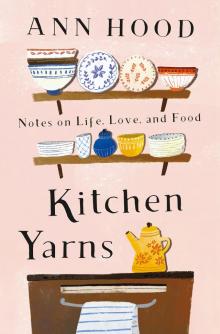 Kitchen Yarns
Kitchen Yarns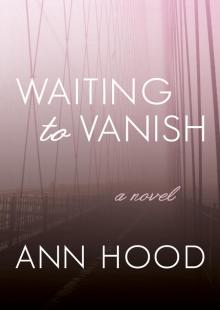 Waiting to Vanish
Waiting to Vanish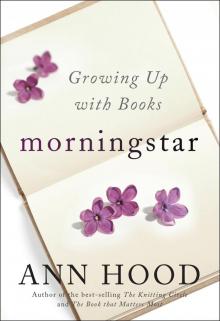 Morningstar
Morningstar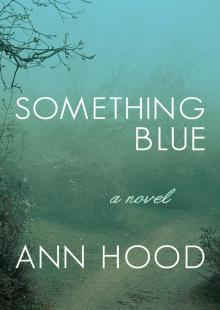 Something Blue
Something Blue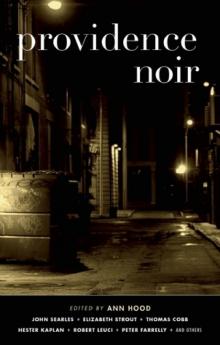 Providence Noir
Providence Noir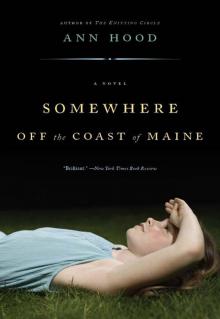 Somewhere Off the Coast of Maine
Somewhere Off the Coast of Maine Jewel of the East
Jewel of the East Queen Liliuokalani: Royal Prisoner
Queen Liliuokalani: Royal Prisoner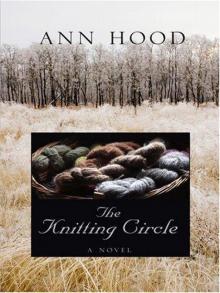 The Knitting Circle
The Knitting Circle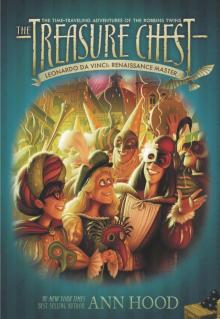 Leonardo da Vinci: Renaissance Master
Leonardo da Vinci: Renaissance Master An Ornithologist's Guide to Life
An Ornithologist's Guide to Life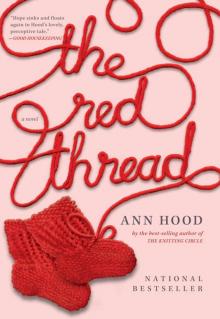 The Red Thread
The Red Thread She Loves You (Yeah, Yeah, Yeah)
She Loves You (Yeah, Yeah, Yeah)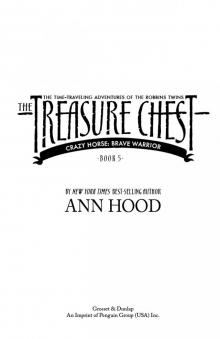 Brave Warrior
Brave Warrior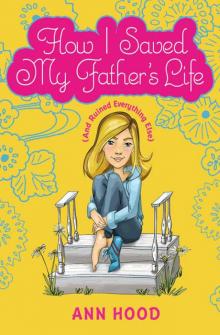 How I Saved My Father's Life (and Ruined Everything Else)
How I Saved My Father's Life (and Ruined Everything Else)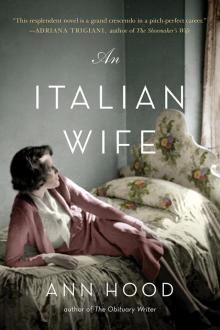 An Italian Wife
An Italian Wife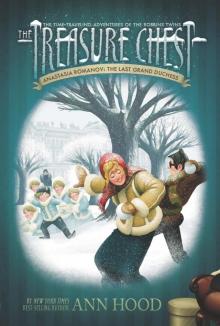 Anastasia Romanov: The Last Grand Duchess #10
Anastasia Romanov: The Last Grand Duchess #10 Prince of Air
Prince of Air Amelia Earhart: Lady Lindy
Amelia Earhart: Lady Lindy Places to Stay the Night
Places to Stay the Night Little Lion
Little Lion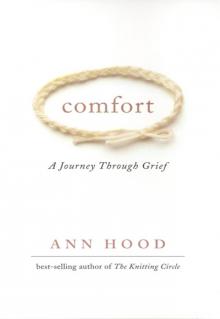 Comfort
Comfort Angel of the Battlefield
Angel of the Battlefield